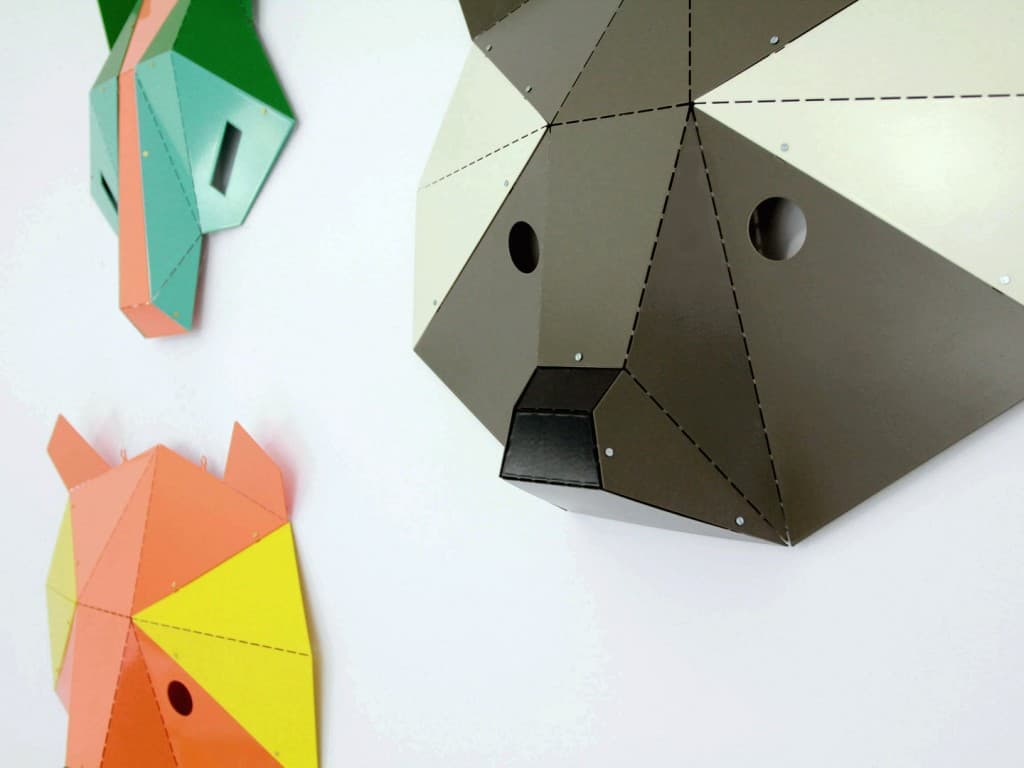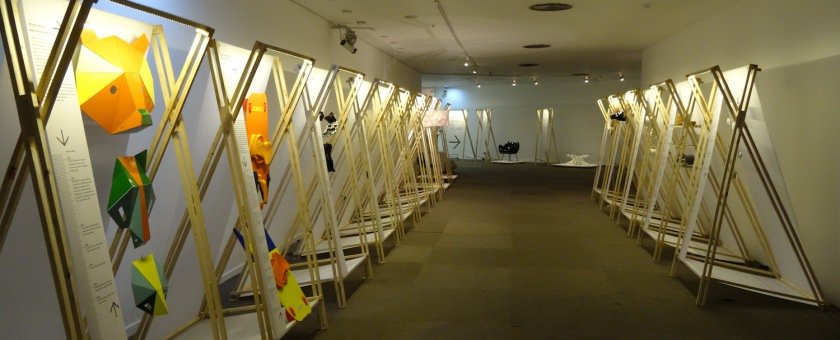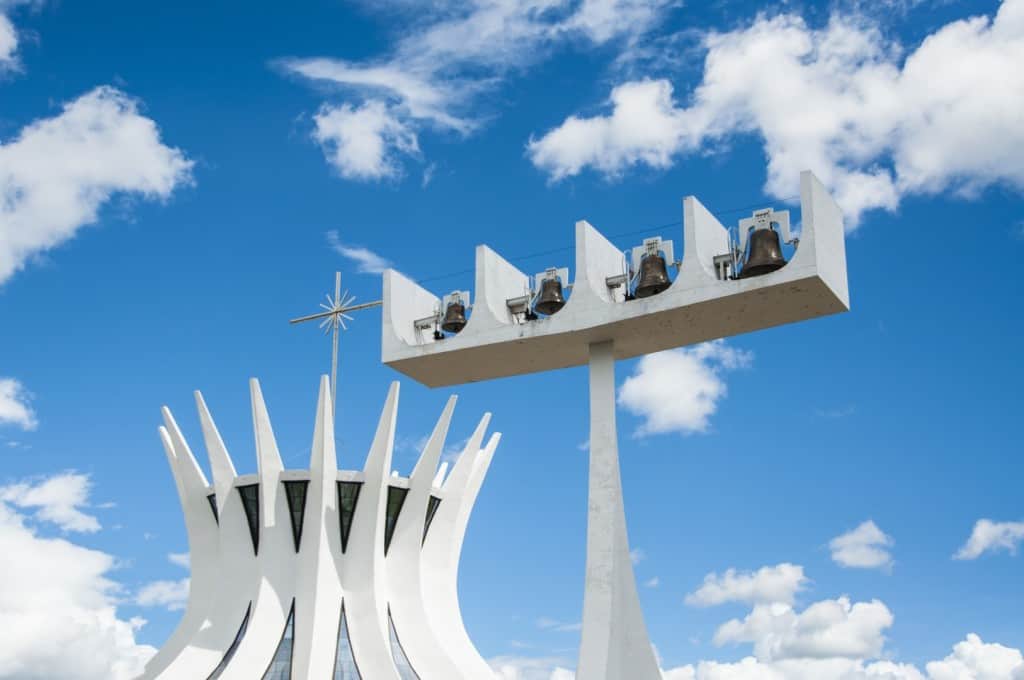Until the 28th November the National Museum in Brasilia was hosting an exhibition featuring Polish designers. The project was previously on display during DW! São Paulo Design Weekend, the biggest design festival in South America. Both exhibitions took place as part of THE SPIRIT OF POLAND initiative in cooperation with Culture.pl.
Contemporary Lynx had the pleasure of talking to Monika Brauntsch – co-founder of The Spirit of Poland.
CL: We would like to begin with congratulating you on your success, and asking you why you chose Brazil? How did you come across the idea of exhibiting Polish design there?
MB: The aim of The Spirit of Poland is to promote Polish design in markets with great commercial potential, which are not easily accessible and where Polish design is not really recognised. Brazil, no doubt, is such a place. Presenting The Spirit of Poland in Brazil coincides with the Polish cultural season planned in the country for 2016/17. Culture.pl, a Polish government initiative, are financing the project. We tend to focus on long-term activities when trying to reach such remote markets, as they make the most sense in this context. The exhibition at the National Museum in Brasilia is our third project in Brazil. The products were on show during this year’s DW! São Paulo Design Weekend, as well as last year.
CL: Whom did you invite to participate in the Spirit of Poland exhibition in Brasilia?
MB: We do not work on an invite-only basis, so we had an open call for designers, as well as companies working with designers.
CL: You announced the Open Call in May. What criteria did you use for the selection process?
MB: We had three key criteria: high design values, an interesting business model, and the availability of the product in the market. We present companies, brands, and designers who fundamentally build their strategy on design.
CL: The exhibition presents products by Polish brands, which have been created with the help of Polish designers. What are the objectives of this project?
MB: Our objectives include promoting Polish culture, networking for commercial benefits, as well as searching for new business opportunities.
At the moment we are focusing on the first two tasks, assuming that promotion of culture should come before other market objectives. At the same time we have managed to establish valuable relations, for instance with the Faculty of Design at the University of Brasilia (UnB), who we have collaborated with during the exhibition at the National Museum. We hope that this union will be a solid platform for future activities not only in the form of exhibitions, but also in the field of cultural and academic, education exchange.
CL: The capital of Brazil, Brasilia, is an extraordinary city. It was almost entirely designed by architect Oscar Niemeyer and urbanist Lucio Costa. The prestigious National Museum Honestino Guimarães, also the work of Niemeyer, is now regarded as one of the icons of modernist architecture in the world. Have you considered the exhibition in context to this extraordinary place?
MB: The exhibition was designed in such a way so that it could be showcased both at the DW! São Paulo Design Weekend, as well as the Museum in Brasilia. Of course, while designing the exhibition we took into account the spatial conditions of the Museum, but also the fact that we should be able to present it both in São Paulo, as well as in Brasilia. The wooden modular system designed by Dorota Kabała performed very well here both in terms of spatial solution, and in the context of transportation.
As far as the exhibits are concerned, I think that the Steel in Rotation table by Zieta Prozessdesign was an interesting case. The product relates to the design of the Cathedral in Brasilia (Catedral Metropolitana de Nossa Senhora Aparecida) designed by Oscar Niemeyer. We did not want to communicate that information directly, as we were not entirely sure how it would be received. So we decided to leave the visitors space for their own interpretation. It turned out that many people noticed this resemblance. During the assembly, students of the University of Brasilia asked questions about that particular design and their responses to it were very positive.
CL: What was the immediate reaction of the Brazilian audience and the atmosphere at the opening party like?
MB: Many guests of diplomatic background appeared at the opening thanks to involvement of the Embassy of the Republic of Poland in Brasilia. We welcomed some of the ambassadors, as well as one of the key representatives of the European Union in Brasilia. The university also had a large representation, particularly from the Faculty of Design. Both students and lecturers turned up. There were also many journalists.
Brasilia (the youngest capital city in the world) is the administration centre of Brazil, so the audience was completely different when compared to São Paulo, the business and creative hub of the country. At São Paulo’s opening party we greeted local designers, artists, architects, and art and design buyers. We were also fortunate enough to meet well-known personalities, such as Humberto Campana, or the famous Brazilian architect, Ruy Ohtake. Representatives of the main media, including Casa Vogue and television Arte 1 were present, as well as representatives of the commercial sector.
Nonetheless both exhibitions were visited by a design-conscious audience, which is precisely our target market. The reception was very positive and we got some amazing feedback. The exhibition highlighted not only commercial products, but also the business models of companies that integrate design into their everyday practice. I believe that in many cases Brazilians were surprised to hear how design-conscious we are in Poland, and that the quality of design is at a very high level. We are surprised to see how much progress Polish design has made in the last decade, as most of the companies presented at the exhibition were not around 10 years ago.
CL: The Spirit of Poland is an initiative that promotes Polish design and culture, supporting Polish brands with the aim of entering new markets and forging business contacts. What other tasks does The Spirit of Poland undertake? Please fill us in.
MB: These are our main objectives. We are trying to tap into these new markets through networking activities, and through collaborating with local bodies, such as the UnB. In exchange for the University of Brasilia’s support in the organisation of the exhibition, we offered to run workshops, for example on design management. This particular workshop was attended not only by students, but also the employees of local companies, and among others, people working on a strategic level for government institutions. It was a very positive experience, demonstrating how exhibitions can be accompanied and strengthened by all these activities taking place around them.
CL: Where does the strength of Polish design come from? What are its distinctive features? Why is it so exceptional? Is it at all possible to characterise the young Polish design present at international events?
MB: We have been asking ourselves these very questions too. It can be stated that for the sake of this project we decided to use the term “Polish design” in order to distinguish its origin, but it clearly does not have such defining features as Danish or Italian design. However in the last few years we have done a lot of research in this field, and whilst observing exhibitions that are currently taking place, we can confidently state that our design is at a world-class level. It is smart, conscious and balanced. In my opinion, it is not our duty to define distinctive features of Polish design. Instead it is worth waiting until our local scene has matured a little more.
CL: Who is the target audience of your presentation?
MB: People interested in design, arts, culture generally speaking. But also shops, concept stores, and potential distributors.
CL: What are your future plans and projects?
MB: We are hoping to continue our activities in Brazil, as the Polish cultural season in Brazil organised by Culture.pl is going to be officially launched in 2016. Our project has won the consent of the Embassy of the Republic of Poland in Brazil, so we are already in the process of preparing some plans for future activities. One of our partners, the European Creative Cluster Lab, has already organised a field trip to Brazil. They are interested in promoting EU-Brazilian creative entrepreneurship and have commissioned us to create a guidebook for EU companies entering the Brazilian market.
Perhaps new geographical directions will crop up for future The Spirit of Poland exhibitions, but since we focus our energy on long-term pursuits, and find Brazil a fascinating place, we will surely continue our work here for a while.















